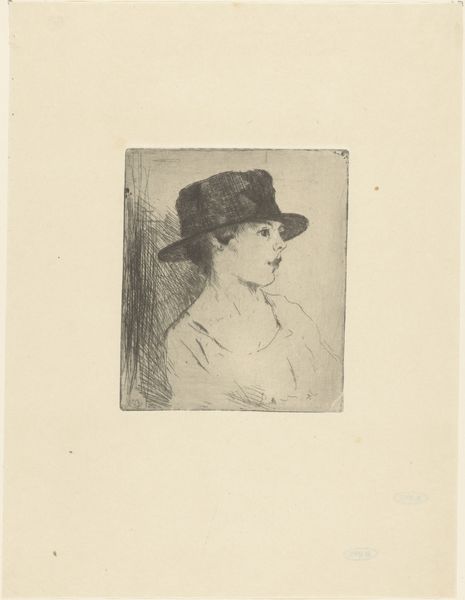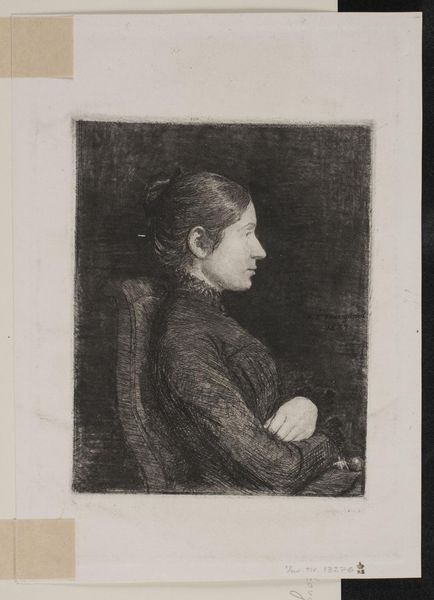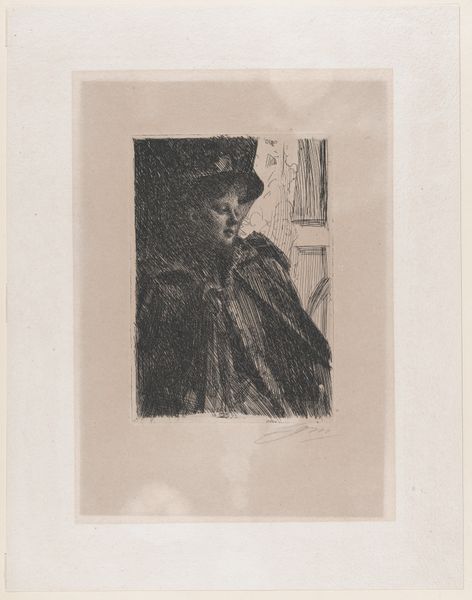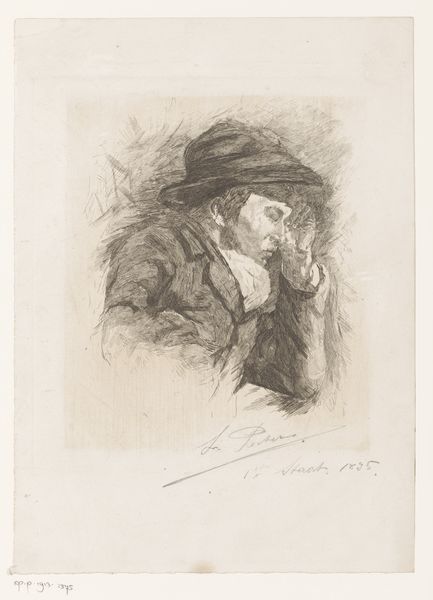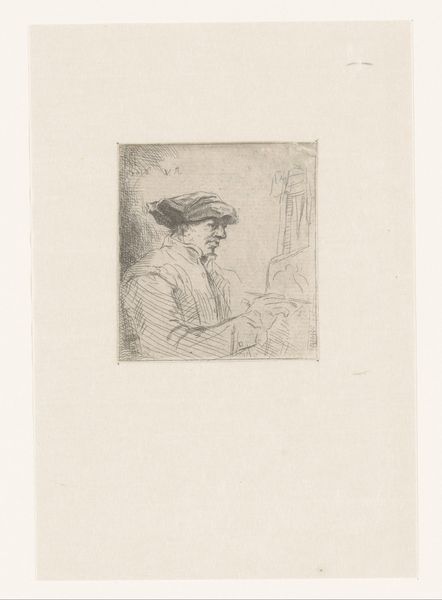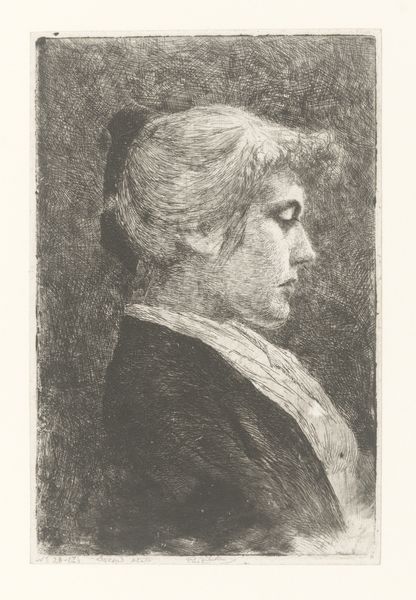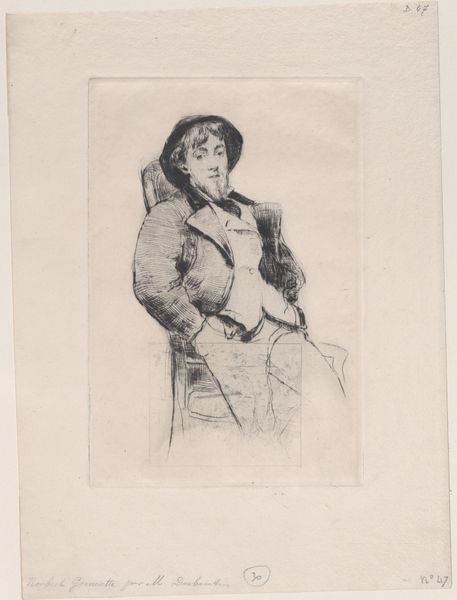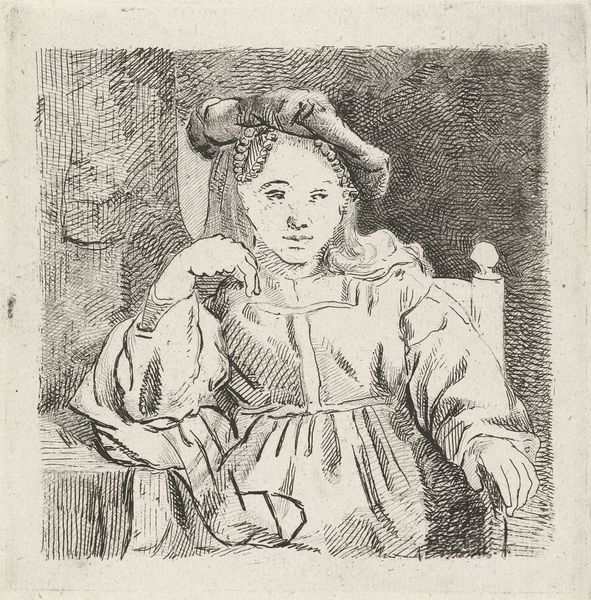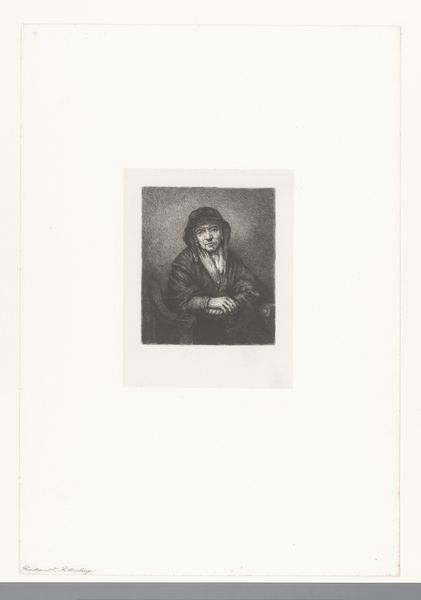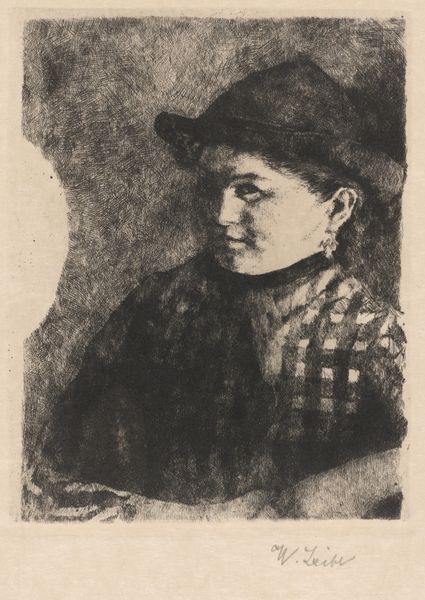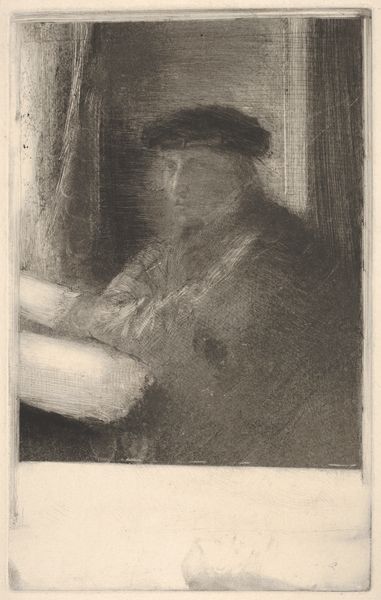
drawing, print, etching, intaglio, paper, engraving
#
portrait
#
drawing
#
self-portrait
# print
#
etching
#
intaglio
#
charcoal drawing
#
figuration
#
paper
#
romanticism
#
line
#
engraving
Dimensions: Sheet: 8 5/8 × 6 7/8 in. (21.9 × 17.4 cm) Plate: 7 1/16 × 4 15/16 in. (17.9 × 12.6 cm)
Copyright: Public Domain
Editor: So, this is "Self-portrait of Richard Parkes Bonington," created in 1847. It's currently at the Metropolitan Museum of Art. From what I understand, it’s an etching, which gives it a very detailed and slightly melancholic feel. What do you see in this piece? Curator: The immediate imagery I am drawn to is the artist's hand supporting his head, almost shielding himself. The hat adds to this sense of introspection, doesn't it? Notice how it creates a shadow over his brow, pushing his gaze into a more psychological space. Consider how the Romantic period really focused on individualism and emotional experience. Editor: Absolutely, he almost looks burdened. Is the hand a common symbol in self-portraits? Curator: Indeed. It often speaks to intellect, to creativity, but also to the weight of these things. The way the light catches the cuff of his sleeve, drawing our eye there – could that be about the *work* of creation, the long hours, the tangible effort? What do you think the effect is of having the background so dark? Editor: It pushes him forward, almost spotlights him in his contemplative state. So, the artist isn’t just showing us what he looks like, but conveying a deeper emotional truth, too. Curator: Precisely! Bonington uses familiar imagery - the artist, the hand, the gaze - but filters them through this lens of personal emotion, a very Romantic sensibility. It reminds us how much power resides in such visual shorthand. Editor: That really makes me see it differently – it’s not just a portrait, it's a statement about being an artist in that period. Curator: Exactly. I leave with a stronger awareness of how symbolic forms reflect our inner and collective experience.
Comments
No comments
Be the first to comment and join the conversation on the ultimate creative platform.
